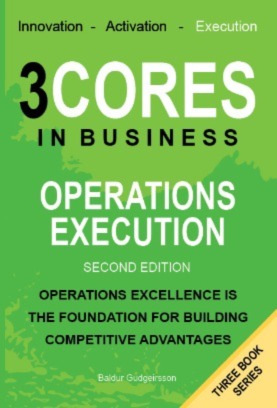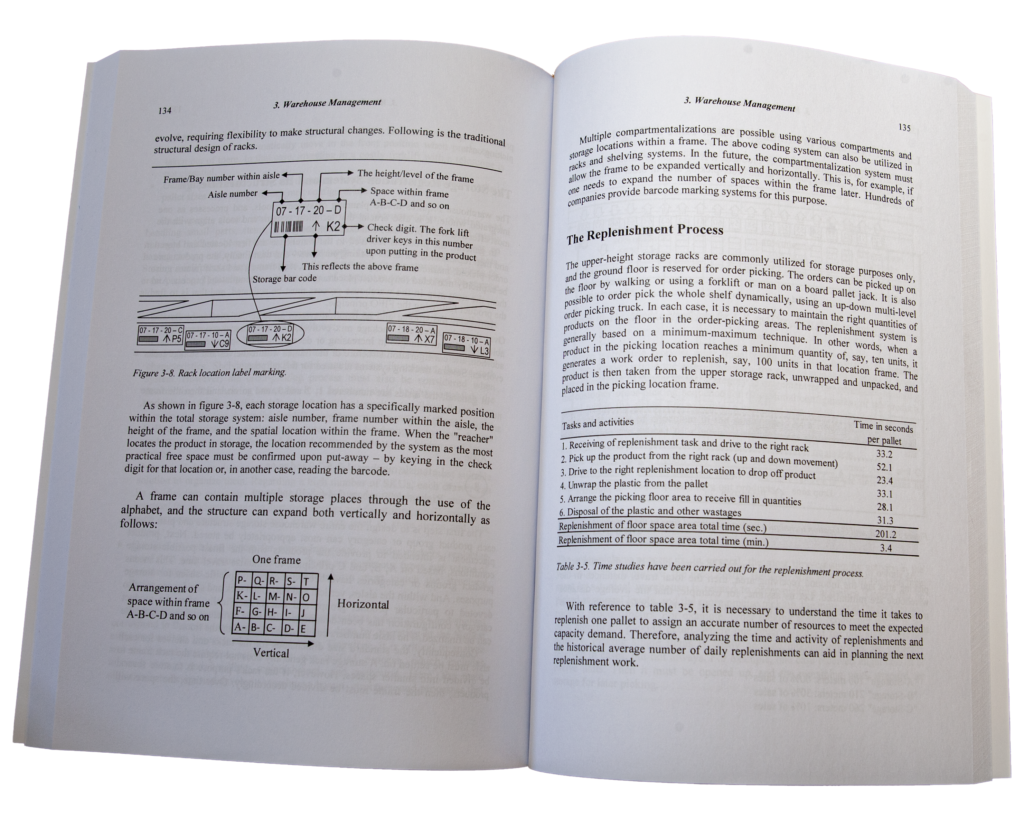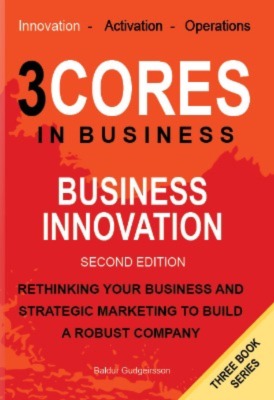Operations Excellence Is The Foundation For Building Competitive Advantages

A must read book!
This book is a treasure if one wants to improve operational excellence leading to increased product availability, sales, services, product quality, cash flow, and profit.
Stafford Petersen


Hands on Knowledge
With the authors’ hands-on experience, this book discusses how to become a best-in-class operation in execution excellence, sales and operation planning, warehouse management, production management, and procurement excellence.
Christopher D. Williams
Focus On Operations –They
Account For Two-Thirds Of
Company Costs!
On the “Best Operations Management Books of All Time,” and also nominated one of the “Best Operations Management Books to read in 2025” a list recommended by CNN, Forbes, and Inc, BookAuthority. Recommendations from Jeff Bezos, Robin Sloan, Nigel Mk Chanakira, Ron Shalit, Business Week, The New York Times, Financial Times, and 15 others. BookAuthority is the world’s leading site for book recommendations.
Throughout this book, we explain how all operations departments must harmonize with the whole process to achieve operations execution excellence
Get Your Copy of Operations
Execution
Note: Due to the changing trading relationship between the UK and EU, the books may be unavailable for sale and delivery to Iceland and Ireland from the UK (go to Amazon.de or Amazon.com).
Here are 10 things you’ll learn from this book

Best-in-class sales and operation planning techniques (S&OP).

A company’s major cost occurs in operations.

Arrangements to increase cash-flow.

Continuous improvement focuses.

Establishing industry-leading procurement systems through improved negotiation powers, supplier management, and quality control, among other focuses.

Best in class warehouse management.

Best in class production management through overall equipment effectiveness focuses (OEE)

How to design, control and manage the deployment planning.

How to reduce throughput time, optimize the cash-flow cycle and the credit and debit terms.

Establishment of a robust key performance indicator system.
…. and much more
Praise for Operations Execution
Great Value!
The book emphasizes that
effective sales and operations planning is fundamental to a business’s success. A unified
plan combines sales, services, marketing, finance, and
operations best practices to
build competitive advantages. Without well-developed and
unified sales and operation
planning, a company cannot
build effective sales cultures.
The book provides a
straightforward explanation of operations management.
Samuel Dias
Great book on Operations Execution Excellence
The book systematically
discusses the factors that help companies achieve best-in-
class performance in
operations execution
excellence, sales and operation planning, warehouse
management, production management, and
procurement excellence.
Beason Wright
Uncovers the True Value of Operations Execution
This book makes the reader
realize the true value of
operations execution
excellence.
Alan Meyer
The Best Read on Operations Management
There is no better book to
explain the importance of
operations execution
excellence than this one.
Courtney McCormick
The book is new, so we await more praise from targeted readers.
Get Your Copy of Operations
Execution
Note: Due to the changing trading relationship between the UK and EU, the books may be unavailable for sale and delivery to Iceland and Ireland from the UK (go to Amazon.de or Amazon.com).
Readers Reviews for Operations Execution
(Click the link to write a review)
Learn through hands-on experience
This book contains solid lessons. Based on experience and sound advice, it’s well thought out. If you encounter a problem in a particular area of your business, read the whole thing, skim it, and then refer to it whenever needed. You’ll find the answers you’re looking for. Remember, knowledge is key and this book is a great starting point.
A Must Read Book
This book’s structure is outstanding. It explains the value of “sales and operations planning” as the core foundation of operation management excellence. Then, it discusses best-in-class warehouse management, production management, and procurement management. It is a must-read for those constantly looking for ways to improve their operations.
Insightful and Eye-Opening
This book emphasizes the critical importance of successful sales and operations planning for any thriving business. It shows how a unified plan—integrating sales, services, marketing, finance, and operations best practices—creates a powerful competitive edge and is essential to building high-performing sales cultures. The book also delivers a clear and engaging breakdown of operations management, making complex concepts easy to grasp and apply.
A Goldmine of Useful Material
This book is a goldmine for anyone looking to achieve operational excellence and unlock massive growth in product availability, sales, services, quality, cash flow, and profit!
A Must-Read Book
This book demonstrates that successful S&OP demands meticulous details, including seamless collaboration among all stakeholders and the establishment of precise time standards and guidelines. Any sales-oriented company seeking to gain a competitive advantage must grasp the crucial insights this book offers. Implementing an integrated S&OP at the right time intervals can eliminate excess inventory, waste, and value erosion. The book emphasizes that S&OP is the cornerstone of building a robust company. This is a must-read book.
A Must-Read for Operations Managers
The book emphasizes that effective sales and operations planning is essential to business success. A unified plan integrating best practices for sales, services, marketing, finance, and operations creates a competitive advantage. A company cannot establish an effective sales culture without a well-developed and unified sales and operations plan. The book also offers a clear explanation of the operations management landscape. Managers will find this book to be easy to understand and a must-have in their library.
Video About Operations Execution
Here are a few more details
about the book
The focus of this book is to provide the reader with concepts and approaches that facilitate “operations execution excellence.” It is alarming to witness how many companies do not focus on developing their operations strengths to their maximum extent as part of their overall sales and services system.
Operations make up the majority of the costs in sales and manufacturing companies –they account for two-thirds of company costs! But, more importantly, every dollar saved in operations is a dollar earned.
Throughout this book, we explain how all operations departments must harmonize with the whole process to achieve operations execution excellence.
The book emphasizes that the fundamental component of achieving operations execution excellence is developing unified planning that integrates sales, marketing, procurement, manufacturing, transportation and warehousing, and finance to maximize consumer, customer, and enterprise benefits.
By incorporating hands-on experience, this book discusses how to improve operations execution, sales and operation planning, warehouse management, production management, and procurement.
This book emphasizes that operations execution excellence is the foundation for building competitive advantages. Thus, for any organization to achieve sustainable growth, operations execution excellence has to be in place.

Get Your Copy of Operations
Execution
Note: Due to the changing trading relationship between the UK and EU, the books may be unavailable for sale and delivery to Iceland and Ireland from the UK (go to Amazon.de or Amazon.com).
Operations Execution
Download Chapter 1 of The Book
Other books written by
Baldur Gudgeirsson

Technology Innovation
How technology innovation will shape our future.
Continually discover new innovative ways of doing business.

Business Innovation
Rethinking your business and strategic marketing to build a robust company.
Continually discover new innovative ways of doing business.

Sales Activation
Create needs and fulfill demands at the point-of-purchase.
To maximize sales effectiveness, keep your efforts focused on the point-of-purchase.
